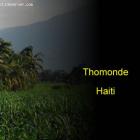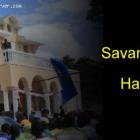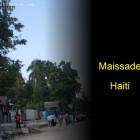ADVERTISEMENT
Tsunami - Haiti Observer Blog
Tsunami, Haiti Observer Blog. Read the following articles about Tsunami
The City of Fort-Liberte, Haiti to be Tsunami Ready
As per news dated September 28, 2018, the commune of Fort-Liberté (North-East) has become ready to receive the "Tsunami ready" label, for its compliance with international requirements for tsunami preparedness and response. However, as per Dr. Jerry Chandler, the Director of Civil Protection, "this recognition does not mean that the commune is now completely safe from tsunamis. It only confirms the relevance of the initiatives, which have been taken in recent years, to make the Fort-Dauphinoise community ready to react in the event of a tsunami warning." In the Caribbean, St. Kitts and Nevis were recognized as Tsunami Ready by UNESCO in 2016 and in the Pacific, Cedeño, Honduras and Ostional, Costa Rica in 2017. Currently, Tsunami Ready pilots are also underway in Haiti, Grenada, and Costa Rica, and in several other Latin American countries. In the Pacific, Guatemala, Mexico, and Nicaragua in Meso-America, Ecuador in the South East Pacific, and Samoa, Tonga and Vanuatu in the South West Pacific have indicated interest.
Potentially deadly tsunamis threaten the Caribbean
We have long known that the islands of the Caribbean have been threatened with the event of earthqauakes. The threat having made itself remembered with the catastrophic earthquake that hit Haiti only three years ago. But now, scientists are reminding us that we face another threat brought on by the number of tectonic plates shifting under our very feet, that of tsunamis.
A slightly exotic thought to the Caribbean mind, as tsunamis are often thought of as a far-away phenomena heard about on the news as it happened in some distant country. But historical accounts show that more than 3,500 people have been killed in tsunamis that struck the Caribbean between 1842 and 2010, which is higher than the 579 dead in tsunamis over the same time frame in the more traditionally tsunami-prone areas of the eastern Pacific.
Tips for Tsunami
Tsunami detecting systems may be used in high risk areas to alert and warn the general population before tsunami waves reach the land.
It is important to provide tsunami education so that people may be able to identify the signs of an approaching tsunami. For instance, a tsunami may begin with the water at the sea shore receding. It can also begin with the water levels rising.
If the leading edge of the wave is the trough, the sea recedes before the waves hit the coast. People unaware of such signs may get excited and remain at the sea shore out of curiosity, or to collect fish from the bare sea bed.
How Tsunami is formed
A Tsunami is not just a tidal wave of larger magnitude; it is more than that. A tsunami can be described as a fast moving and endless tide that overcomes any obstacle. Tsunamis vary in magnitude and subsequently the damage they cause. Some tsunami effects go unnoticed while others cause a devastating damage to lives and property.
Factors that affect the ocean or sea bed are catalysts of tsunami. Landslides, earthquakes, large meteorite impacts and volcanic eruptions all carry the ability to generate a tsunami.
A tsunami will go unnoticed at the sea because the wave has small amplitude and a very long wavelength. In the sea a tsunami is just like a passing hump. As tsunami waves approach the dry land where the sea shallows, the waves speed is reduced. The waves begin to 'pile-up'. At the coastal line, the wave-front grows steeper and heightens, and the distance between crests lessens.
Our objective is to share with you news and information about Haiti and the people of Haiti. Traditions, habits and the way we were or grew are alive in this site. We highly recommend that you Subscribe to our Newsletter and also share with us some of the things that are memorable and made us unique people.

 Thomonde, Haiti
Thomonde, Haiti  The Town of Savanette, Haiti
The Town of Savanette, Haiti  Life After Death
Life After Death  Battle of Vertieres
Battle of Vertieres  Maissade, Haiti
Maissade, Haiti